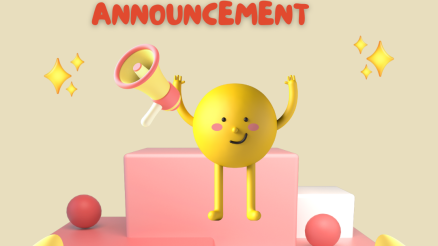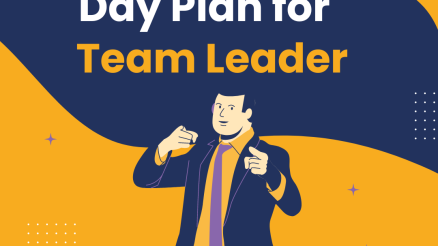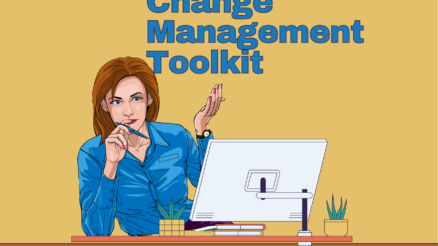Do you know that you can actually sprinkle a bit of fun into the daily routine of the workplace?
Well, that’s where the magic of gamification in the workplace comes into play.
It’s not just about turning every task into a game, but about tapping into the benefits of gamification in the workplace to make work more engaging, productive, and yes, even enjoyable.
From boosting team collaboration to ramping up training effectiveness, gamification is transforming how we view our jobs. And the best part?
There are tons of real-world examples of gamification in the workplace that are already making waves.
So, whether you’re curious about how to motivate your team or just looking for ways to make those Monday mornings a bit less daunting, stick around.
We’re diving into the nitty-gritty of gamification and its game-changing potential at work.
What is gamification in the workplace?
Gamification in the workplace refers to the strategy of applying game-design elements and principles in non-game contexts to improve employee engagement, productivity, and overall job satisfaction.
This approach leverages the innate human desires for competition, achievement, collaboration, and learning through mechanisms typically found in games, such as points, levels, badges, leaderboards, challenges, and rewards.
The core idea behind gamification is to make work-related tasks more engaging and fun, encouraging employees to participate more actively and achieve their goals with greater enthusiasm.
By incorporating elements of games into the work environment, companies aim to tap into the psychological benefits of gaming, such as the feeling of accomplishment, the drive to compete, and the joy of overcoming challenges.
These elements can significantly enhance motivation, focus, and loyalty among employees, leading to a more dynamic, productive, and fulfilling workplace.
The psychological basis of gamification
Alright, let’s dive into the fascinating world of gamification and uncover the secret sauce behind its success – the psychological basis that makes it tick. It’s all about tapping into our inner desires and how we’re wired to respond to games.
Ever wondered why it feels so good to cross something off your to-do list or why we get a little rush of excitement when we earn a reward?
That’s psychology in action, my friend, and gamification in the workplace plays this like a maestro.
Motivation: The “Why” Behind the Game
First up, we have motivation – it’s the driving force that nudges us to take action. In the context of gamification, it’s all about creating a sense of purpose and achievement.
When tasks are gamified, they’re no longer just items on a checklist; they become challenges to conquer, quests to complete.
This shift in perspective can make even the mundane tasks feel like adventures, sparking that internal motivation to push forward and engage more deeply with our work.
Engagement: Keeping the Game Interesting
Next, let’s talk engagement. It’s one thing to start a task, but quite another to stay interested and invested in it.
Gamification keeps the flame of engagement alive by making the journey enjoyable. Through interactive elements like leaderboards, points, and badges, work feels more like play.
It’s the difference between running on a treadmill staring at a blank wall and running while chasing virtual goals or exploring scenic routes.
By adding elements of competition and achievement, employees are not just working; they’re participating in an experience that’s dynamic and, dare I say, fun.
Reward System: The Cherry on Top
And then we have the reward system – the cherry on top of the gamification sundae. This taps into our brain’s love for rewards, triggering the release of feel-good chemicals like dopamine.
When we achieve a goal and receive a reward, be it a badge, a point, or public recognition, our brain lights up with pleasure.
This not only makes us feel great but also reinforces the behavior that got us the reward in the first place. It’s a powerful cycle: complete a task, get a reward, feel good, and then dive back in with even more enthusiasm.
Putting It All Together
By weaving together motivation, engagement, and the reward system, gamification creates a work environment where employees are more likely to feel inspired, stay focused, and enjoy the satisfaction of their achievements.
It’s not just about making work fun; it’s about harnessing the power of psychology to foster a more productive, engaging, and rewarding workplace. So, next time you see a gamified system at work, remember, there’s a whole lot of psychological wizardry at play, making your work life a bit more like your favorite game.
Benefits of gamification in the workplace
Let’s break down the game-changing benefits of gamification in the workplace. When done right, gamification isn’t just a buzzword; it’s a strategy that can transform the daily grind into something a bit more engaging and fun.
Enhanced Employee Engagement
Imagine your typical workday, but with a twist—where completing tasks feels like accumulating points in your favorite game. Gamification turns routine tasks into engaging challenges, making employees feel like they’re part of a larger quest rather than ticking boxes.
It’s like being the main character in a video game, where each task completed brings you one step closer to the ultimate prize. This approach keeps the workday interesting and employees more invested in their roles, which, let’s be honest, is a win-win for everyone.
Improved Training and Development
Remember those days spent in training sessions, fighting the urge to glance at your watch every five minutes? Gamification is here to change that. By incorporating game elements into learning modules, employees find themselves actually looking forward to training sessions.
It’s the difference between reading a dense manual and playing a learning-focused game that rewards you for mastering new skills. This method not only makes learning more enjoyable but also enhances retention and application of new knowledge. Who knew learning could be so fun?
Increased Productivity
Gamification introduces a level of competition and achievement that can turn even the most procrastination-prone employee into a productivity powerhouse. It’s about setting clear goals and rewarding progress, which lights up our brain’s reward centers and pushes us to achieve more.
Think of it as turning your workload into a series of mini-games, where each completed task brings a sense of accomplishment. Suddenly, meeting deadlines doesn’t just feel like meeting expectations; it feels like leveling up.
Enhanced Team Collaboration
Gamification can transform solitary tasks into team missions, encouraging collaboration and communication among team members. Imagine your team as a group of adventurers on a quest, where each person’s skills are crucial to achieving the collective goal.
This setup promotes a sense of unity and cooperation, making teamwork not just necessary but enjoyable. It’s about bringing everyone together, not just to share the workload but to share in the victory as well.
Employee Satisfaction and Retention
In a world where job hopping has become the norm, gamification offers a breath of fresh air. It creates a work environment that’s not only productive but also rewarding and engaging.
Employees who feel recognized and rewarded are not only happier but also more likely to stick around. It’s about creating a workplace culture that values fun, achievement, and recognition, making employees think twice before looking elsewhere for job satisfaction.
Fosters Innovation and Creativity
A workplace where every challenge is an opportunity to think outside the box, where employees are encouraged not just to think differently but to be rewarded for it. Gamification sets the stage for innovation by turning problem-solving into a competitive sport.
It’s like hosting a brainstorming session, but with the engagement dial turned all the way up. Employees get to pitch their wildest ideas, compete in innovation challenges, or contribute to collaborative quests for new solutions.
Improves Problem-Solving Skills
Imagine transforming complex challenges into engaging puzzles that employees are eager to solve. Gamification does exactly that by reframing obstacles as levels to be completed, encouraging employees to deploy strategic thinking and teamwork to find solutions.
It’s akin to playing a strategy game where each level requires a new approach, pushing players to develop and refine their problem-solving tactics. In the workplace, this translates to employees who are more adept at navigating challenges, armed with a toolkit of strategies honed through gamified experiences.
Boosts Engagement with Corporate Culture
Imagine gamification as the secret sauce that makes the core values and culture of a company not just visible but truly engaging. It’s like embedding the essence of the company into a series of quests and challenges, inviting employees to live and breathe the corporate culture in a fun and interactive way.
This approach transforms abstract concepts like values and missions into tangible actions and behaviors, making the corporate culture something employees can actively participate in and contribute to. It’s the difference between reading about the company’s values in a handbook and experiencing them through engaging, gamified activities.
Encourages Healthy Competition
There’s something about a little friendly competition that can ignite a fire in us, isn’t there? Gamification harnesses this by creating a framework where employees are motivated to outdo not just their personal bests but also to engage in healthy competition with their peers.
It’s like having a leaderboard for various tasks or achievements, but instead of fostering cutthroat competition, it promotes a sense of camaraderie and mutual growth. Everyone wants to climb the leaderboard, but it’s the journey and the shared experiences that truly enrich the workplace environment.
Enhances Feedback and Recognition
In the traditional workplace, feedback can sometimes feel like a one-way street or, worse, a dreaded encounter. Enter gamification, which turns feedback and recognition into an integral, ongoing part of the game. It’s like getting real-time updates on your progress, with badges, points, or shout-outs as immediate tokens of achievement.
This continuous loop of feedback keeps employees informed about where they stand and what they need to improve, all within a positive and uplifting framework. It makes receiving feedback feel less like criticism and more like leveling up in a game, where each piece of advice helps you get better and each recognition is a testament to your progress.
Personalizes the Employee Experience
Gamification isn’t a one-size-fits-all solution; it’s a versatile tool that can be tailored to fit the unique preferences and motivations of each employee. Imagine a workplace where your personal goals and challenges are aligned with your daily tasks, where the path to achievement mirrors your individual strengths and interests.
This level of personalization ensures that employees are not just engaged but deeply connected to their work and their progress. It’s the ultimate customization of the work experience, making every employee feel like the hero of their own story.
How to Implement Gamification in the workplace?
Let’s unlock the secrets to turning your workplace into a gamified wonderland where productivity and engagement soar.
Step 1: Define Your Objectives
First things first, you gotta know what you’re playing for. What’s the endgame of introducing gamification into your workplace? Are you looking to boost sales, enhance training, or maybe improve team collaboration? Setting clear, measurable objectives is like choosing your quest in a game.
It gives you a target to aim for and a way to measure your progress. Think of this step as setting up your game board; knowing what you want to achieve will help you design the game to get there.
Step 2: Know Your Players
Next up, it’s time to get to know your players—your employees. Just like in any game, understanding who is playing is crucial to designing an engaging experience. What motivates your team? Do they thrive on competition, or are they more about collaboration and community?
This step is like selecting your character class in a role-playing game; knowing your players’ preferences and strengths helps tailor the gamification elements to keep everyone engaged and motivated.
Step 3: Design Your Game Elements
This is where the fun really begins. Based on your objectives and player insights, decide on the game mechanics to use. Will you have leaderboards, points, badges, or challenges? Maybe a mix of all?
Designing your game elements is like choosing your equipment before a big boss battle. Each element should serve a purpose and contribute to the overall objectives. Remember, the goal is to enhance the work experience, not to overshadow it.
Step 4: Create a Feedback System
Feedback is the lifeblood of any game, and gamification in the workplace is no different. Setting up a system for continuous feedback and recognition keeps players—err, employees—engaged and informed about their progress.
Whether it’s through real-time notifications, weekly leaderboards, or regular shout-outs, make sure feedback is constructive, timely, and, above all, meaningful. Think of it as the in-game feedback that helps players adjust their strategies and improve.
Step 5: Implement and Monitor
With your game designed, it’s time to roll it out. But remember, the best games are those that evolve. Launch your gamification initiative and monitor its performance closely. Are employees more engaged? Are you meeting your objectives?
Use data and feedback to tweak and adjust your game mechanics as needed. This is like patching a game based on player feedback to make it better. The goal is to keep the experience fresh, relevant, and engaging for everyone involved.
Step 6: Celebrate and Iterate
Last but not least, celebrate the wins and learn from the challenges. Recognize and reward your employees for their achievements within the gamified system. Then, take what you’ve learned to refine and expand your gamification strategy.
Like any good game developer, your work is never truly done. There’s always a new level to explore, a new feature to add, or a new bug to fix. The key is to keep the game engaging and aligned with your evolving workplace goals.
Examples of gamification in the workplace
Here are some examples that bring this concept to life, turning the mundane into the extraordinary.
Sales and Marketing
Sales teams thrive on competition, so why not gamify it? Picture a leaderboard that updates in real time, showing who’s closing the most deals or generating the most leads.
It’s like turning the sales floor into a live-action sports event, where every sale moves you up the rankings. This not only drives motivation but also fosters a healthy competitive environment where everyone’s trying to beat their best score or outdo their colleagues, all in the spirit of boosting the company’s bottom line.
Human Resource
Now, let’s talk onboarding. Usually, it’s a slew of forms, videos, and handbooks, right? But imagine if starting a new job felt like starting a new game. New employees embark on “quests” to learn about the company culture, policies, and their roles.
Each completed task unlocks a new level or earns a badge, making the onboarding process interactive and engaging. It’s like turning what’s traditionally been a solo quest of reading and watching into a multiplayer experience, where new hires learn by doing and earn rewards along the way.
Customer Service
In customer service, gamification can transform the way teams handle support tickets. Think of each resolved ticket as a “quest” completed, with points awarded based on the difficulty level or speed of resolution.
This could include badges for milestones or customer satisfaction scores, encouraging a focus on quality and efficiency. It’s like turning the customer service desk into a game console, where every interaction is a chance to level up, enhancing both employee engagement and customer satisfaction.
Research and Development
Here’s where it gets really innovative. Gamification in R&D can look like an idea generation tournament, where employees submit proposals for new products or improvements. It’s a bit like a reality TV competition show but for groundbreaking ideas.
Colleagues can vote on submissions, pushing the best ideas to the top. This not only encourages creativity and collaboration but also democratizes the innovation process, making it a team effort to find the next big thing.
Final Words
The benefits of gamification in the workplace proves to be more than just a buzzword—it’s a game-changer in how we approach work. Whether it’s turning sales into a competitive sport, making onboarding an adventure, or transforming customer service into a quest for excellence, these examples show just how versatile and impactful gamification can be. So, as we wrap up this exploration, remember that the key to a more engaged, productive, and satisfied workforce might just lie in the playful heart of gamification. Who knew that adding a little game to the workday could make such a big difference? Let’s play on!



